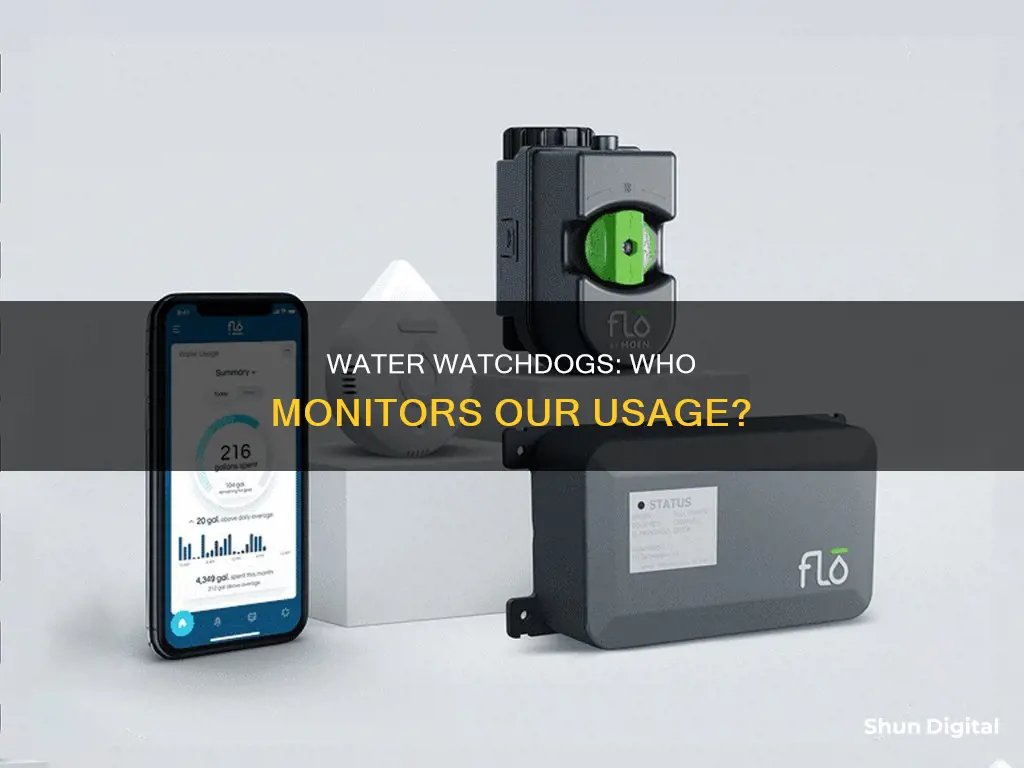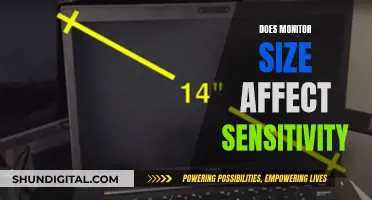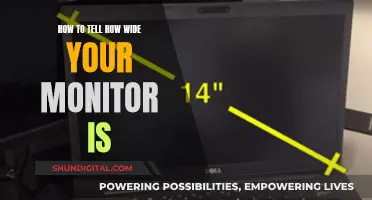
Water usage monitoring is an important aspect of environmental conservation and cost management. With rising concerns over water scarcity and the associated costs, it is crucial to keep track of water consumption. Traditionally, water usage was monitored through manual reading of mechanical water meters, but this method is prone to human errors and lacks real-time data. Today, smart water monitoring systems, such as Flume 2 and Streamlabs, offer more sophisticated solutions by providing detailed, real-time water usage data, leak detection, and integration with smart home devices. These systems empower individuals, property developers, and water companies to make informed decisions, promote sustainability, and reduce water waste.
| Characteristics | Values |
|---|---|
| Water Monitoring Methods | Traditional Methods (manual reading of mechanical water meters), Smart Water Meters, Water Flow Meters, Advanced Metering Infrastructure (AMI), Remote Sensing |
| Purpose of Monitoring | Conservation, Cost Management, Leak Detection, Resource Management, Identifying Inefficiencies |
| Data Access | Online account, Smartphone app, Web dashboard |
| Data Features | Real-time usage, Consumption patterns, Alerts for unusual usage, Budgeting tools |
| Data Analysis | Usage trends, Future usage prediction, Suggestions for conservation |
| Smart Home Integrations | Alexa, Google Home, Orbit Integration, NEST, Apple HomeKit |
| Installation | Self-installation, Professional installation |
| Cost | Varies depending on the product and installation requirements |
What You'll Learn

Smart water meters
Benefits of Smart Water Meters
One of the primary advantages of smart water meters is their ability to provide accurate and timely measurements of water consumption. This real-time data helps in improved leak detection and water loss prevention, ensuring that issues are addressed promptly before they escalate into major problems. Smart water meters also contribute to reduced water bills for consumers and facilitate more efficient billing and revenue collection for utility companies. Additionally, the enhanced data analysis provided by these meters assists in effective water management and the implementation of conservation initiatives.
The introduction of smart water meters has transformed the way water billing is handled. With traditional water meters, customers were often billed based on estimated usage, leading to inaccuracies and disputes. Smart water meters, on the other hand, provide precise readings, ensuring that customers pay only for the water they actually use, resulting in fairer and more efficient billing practices.
The effectiveness of smart water meters is evident in various successful implementations worldwide. For instance, the City of San Diego adopted smart metering technology in 2011, resulting in a notable 20% reduction in water consumption. Similarly, several water companies in the UK have embraced smart metering, leading to significant water savings and improved billing accuracy.
In conclusion, smart water meters are a game-changer in the realm of water management, offering accurate and timely data on water usage. They promote water conservation, reduce water waste, and enhance billing accuracy. While there are challenges to their large-scale implementation, the benefits are undeniable, and smart water meters are poised to play an increasingly important role in fostering a more sustainable future.
Monitoring Staff Internet Usage: Strategies for Effective Oversight
You may want to see also

Water companies' monitoring methods
Water companies employ a range of methods to monitor water distribution and consumption across their networks. This includes tracking water supply to different areas and detecting leaks and inefficiencies within the distribution system.
One method is District Metering, where water companies divide their service areas into smaller districts and monitor the water flow into each. By analyzing these flows, companies can identify areas with potential leaks or unauthorized water usage. Advanced Metering Infrastructure (AMI) systems are another tool, which are an evolution of smart meters, enabling two-way communication between the meters and the utility company. This technology allows for more detailed data collection and analysis, improving billing accuracy and water conservation efforts.
Water utilities also use remote sensing technologies, including satellites and drones, to monitor water resources and infrastructure. This is particularly useful for detecting leaks in large-scale water distribution systems.
In addition to these methods, water companies can employ smart infrastructure, which includes technologically advanced pipes and valves. These can be controlled remotely to adjust water distribution, reducing waste and enhancing efficiency.
The combination of these monitoring methods allows water companies to effectively manage water resources, identify issues, and optimize distribution to ensure sustainable and efficient water usage.
Monitoring Data Usage: DD-WRT for Device Control
You may want to see also

Real-time data
Water usage monitoring has evolved in the digital era, and real-time data is now an essential component of efficient water management. Real-time data helps promptly identify issues such as leaks or abnormal usage, preventing water wastage and reducing costs. Here's how real-time data is revolutionising water usage monitoring:
Smart Water Meters
Smart water meters are the latest innovation in water usage monitoring, providing real-time data directly to utility providers and consumers. These high-tech devices offer a significant upgrade from traditional mechanical meters, transmitting detailed water usage information. Consumers can access this data through smartphone apps or web dashboards, allowing them to track their consumption patterns and set alerts for unusual usage. This empowers individuals to make more informed decisions about their water usage and quickly address any potential problems.
Water Flow Meters with AI-Enhanced Monitoring
Water flow meters, such as the Water Monkey by Connected Sensors, take water usage monitoring a step further. These sensors not only measure water usage but also send the data to an AI-powered dashboard. This dashboard analyses the information in detail, uncovering trends, predicting future usage, and suggesting conservation strategies. The dynamic nature of AI-enhanced monitoring enables a responsive and efficient approach to water usage management.
Remote Sensing Technologies
Water utility companies are now utilising remote sensing technologies, including satellites and drones, to monitor water resources and infrastructure. This technology is particularly useful for detecting leaks in large-scale distribution systems. By employing remote sensing, companies can efficiently manage and optimise their water supply systems, reducing waste and ensuring a more sustainable future for this precious resource.
Several platforms, such as WaterSignal and Flume, offer real-time water monitoring services. WaterSignal provides non-invasive technology that alerts building engineers to excessive or abnormal water usage, helping prevent uncontrolled water loss and potential infrastructure damage. Flume, a smart home water monitor, detects leaks and provides detailed, down-to-the-minute water usage data, empowering users to take control of their water consumption and make informed decisions.
Government Initiatives
Governments are also recognising the importance of real-time data in water usage monitoring. For example, the USGS National Water Dashboard in the US provides interactive maps with real-time water data from over 13,500 stations nationwide. Similarly, Environment Canada offers real-time hydrometric data, allowing users to search for specific stations or locations to access water level and discharge data. These initiatives promote transparency and enable better water resource management.
Monitoring Gas Usage: Individual Apartment Solutions
You may want to see also

Leak detection
Traditional Methods
The conventional way of detecting leaks involves manually reading mechanical water meters installed by utility companies. These meters have dials that display water usage, which homeowners or property management teams would periodically check to track consumption. However, this approach is prone to human errors and lacks real-time data, making it inefficient and inaccurate.
Smart Water Monitoring
Smart water meters are the modern alternative to traditional meters, offering real-time data and remote access. These high-tech devices transmit detailed water usage information directly to the utility provider and the consumer. Users can access this data through smartphone apps or web dashboards, allowing them to monitor consumption and detect abnormal usage patterns that could indicate leaks.
Water Flow Meters with AI-Enhanced Monitoring
Water flow meters, such as the Water Monkey by Connected Sensors, go beyond simple measurements. They collect data and send it to an AI-powered dashboard for in-depth analysis. This technology can identify trends, predict future usage, and suggest areas for water conservation.
District Metering
Water companies often employ district metering, dividing their service areas into smaller districts to monitor water flow into each. By analyzing these flows, they can identify areas with potential leaks or unauthorized water usage.
Advanced Metering Infrastructure (AMI)
AMI systems are an advanced form of smart meters, enabling two-way communication between the meters and the utility company. This technology allows for detailed data collection and analysis, improving billing accuracy and supporting water conservation efforts.
Remote Sensing
Some water utilities utilize remote sensing technologies, including satellites and drones, to monitor water resources and infrastructure. This approach is particularly useful for detecting leaks in large-scale water distribution systems.
In addition to the above methods, there is a range of leak detection devices available for homeowners and businesses. These devices can be placed in areas prone to leaks, such as under sinks or near water heaters, and will alert the user to any issues. Examples include the Moen Smart Water Detector, Flo Smart Water Monitor, and Phyn Smart Water Sensor.
In conclusion, leak detection is a critical component of water usage monitoring, and the availability of advanced technologies offers more efficient and accurate solutions compared to traditional manual processes. By adopting these methods, individuals, businesses, and water companies can better manage their water usage, prevent wastage, and reduce the risk of water damage.
Monitoring Web Usage: Strategies for Tracking Online Activity
You may want to see also

Water conservation
Water is an indispensable resource, but the pressures on freshwater resources are intensifying due to population growth, increased industrial activities, urbanisation, and changing lifestyles. Water conservation is essential to maintaining clean, pure water and safeguarding the ecosystem.
Water Monitoring and Leak Detection
Water monitoring is critical to managing water resources efficiently and sustainably. While traditional methods, such as manually reading mechanical water meters, have been common, they are often inaccurate and inefficient. Modern solutions, such as smart water meters and water flow meters with AI-enhanced monitoring, provide real-time data and valuable insights into usage patterns, helping to identify leaks and improve water conservation efforts.
Water-Efficient Fixtures and Appliances
Upgrading to efficient fixtures and appliances is an effective way to save water. This includes installing low-flow or water-saving showerheads, faucet aerators, and high-efficiency washing machines. Composting toilets, which require no water, are also an option to consider.
Water Reuse and Recycling
Greywater recycling systems collect and reuse water from sources like baths, hand basins, and showers for external uses such as garden irrigation, toilet flushing, and washing machines. Rainwater harvesting involves collecting rainwater for similar purposes, and it can be done through simple or complex systems depending on the scale.
Efficient Irrigation Technology
Outdoor irrigation technologies, such as smart irrigation controllers, can track factors like precipitation and temperature to optimise water usage for landscaping or plantations. Drip irrigation, a water conservation method for irrigation, delivers water directly to the base of plants through narrow tubes, reducing water wastage.
Water Pressure Management
High water pressure can lead to water wastage. Installing pressure-reducing valves can lower the incoming water pressure, reducing water consumption and protecting plumbing components.
Insulating Piping and Storage Tanks
Insulating hot water pipes and storage tanks ensures that hot water is readily available, reducing the time spent waiting for hot water to flow and, consequently, water wastage.
Water-Efficient Habits
Individuals can also contribute to water conservation by adopting simple habits such as turning off taps while brushing teeth or shaving, taking shorter showers, and fixing leaking taps and pipes promptly. Rainwater harvesting and drip irrigation are additional techniques that can be practised to minimise water wastage.
Monitoring and Managing Chromebook Usage: Tips for Parents and Teachers
You may want to see also
Frequently asked questions
There are several smart water monitors available in the market that can help you track your water usage and detect leaks. These include the Flume 2 Smart Home Water Monitor, Streamlabs Smart Home Water Monitor, and WaterSignal. These devices use advanced technologies like artificial intelligence and ultrasonic sensors to provide real-time data on water consumption and potential leaks.
Monitoring water usage offers several advantages. Firstly, it helps identify leaks promptly, preventing water wastage and potential property damage. Secondly, it enables you to track your water consumption patterns, set budgets, and make more informed decisions to conserve water and reduce costs. Additionally, with access to real-time data, you can take immediate action to address any issues and promote more sustainable water usage.
When choosing a water usage monitoring system, consider factors such as ease of installation, compatibility with your plumbing system, accuracy, real-time data access, leak detection capabilities, and integration with smart home devices. Compare features and pricing of different products to select the one that best suits your needs and preferences. Some popular options include Flume, Streamlabs, WaterSignal, and Flo by Moen.







